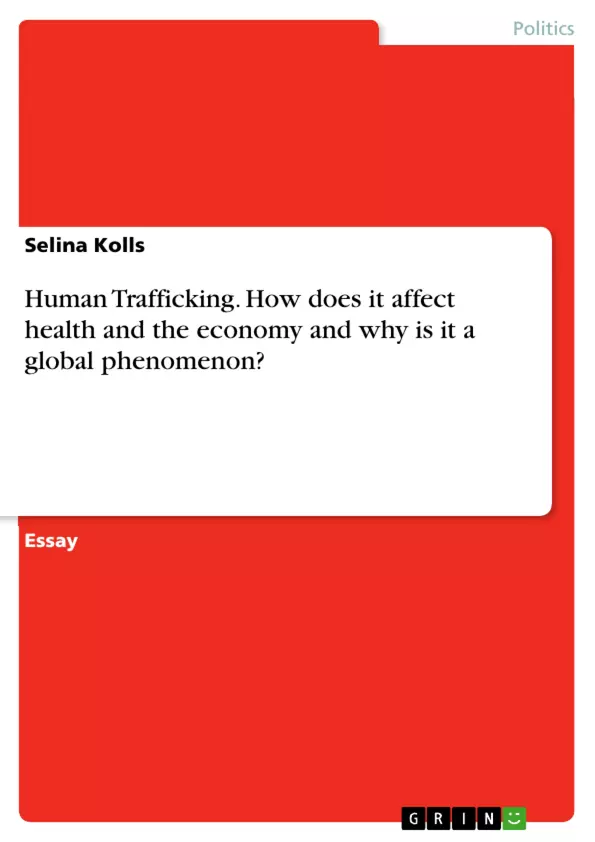This essay provides an overview of why human trafficking is a global phenomenon, and why it has gathered significant attention in the past years. It also reveals the health effects of human trafficking on women and how trafficking affects the various sectors of the economy.
Finally, the paper reveals how human trafficking can be approached, with the intention of curbing its negative effects.
Frequently asked questions
What is the main topic discussed in this document?
This document focuses on human trafficking and its connection to health issues, including psychological, physical, mental, and developmental effects.
What regions are mentioned in relation to trafficking and its impacts?
The document mentions Europe and the Republic of Moldova as regions where studies have revealed the psychological and health impacts of human trafficking.
What types of trafficking are discussed?
The document discusses sex trafficking, labor trafficking, and child trafficking, highlighting the health issues associated with each.
What are some of the health risks associated with labor trafficking?
Victims of labor trafficking are exposed to various occupational health risks such as poor sanitation, ventilation, repetitive motion activities, extended work hours, lack of training, inadequate protective gear, and exposure to extreme temperatures and hazardous materials. These risks can result in dehydration, repetitive motor syndromes, exhaustion, stress, heat stroke, respiratory disorders, accidental injuries, and skin infections.
How does child trafficking impact the health and development of children?
Child trafficking involves methods such as isolation, psychological, physical, and sexual violence, and substance abuse, which undermine their physical and psychological defenses. This results in emotional and physical trauma, impacting psychological, physical, social-emotional, and spiritual development. Victims may also experience developmental delays, cognitive and language difficulties, deficits in memory and verbal skills, grade retention, and poor academic performance.
What is debt bondage, and how is it related to human trafficking?
Debt bondage is a subtle form of human trafficking where victims are coerced into forced labor or prostitution to pay off debts, often incurred during recruitment, transportation, or accommodation. Traffickers may use violence, retain travel documents, or threaten harm to families to control victims.
What are some of the challenges in combating debt bondage?
The subtle nature of debt bondage makes it difficult to notice and combat. Victims are often manipulated through illegal migration or threats of violence, masking the trafficking situation as they are not forcibly retained or kidnapped.
When did human trafficking gain international recognition as a crime?
Human trafficking only gained recognition internationally as a crime in the late 1990s, when nations began developing legislations to regulate its effects.
What is the overall conclusion of the document?
Human trafficking is a process through which people are placed or maintained in a position for economic gain, affecting children, men, and women globally. It is closely linked to various health issues. The document concludes that nations should unite to ensure humane and just treatment for all persons.
What are the references used in this document?
The references include:
- Rafferty, Y. (2008). The Impact of Trafficking on Children: Psychological and Social Policy Perspectives.
- SVAW,. (2016). Debt Bondage and Trafficking in Women. Stop Violence Against Women.
- UNITED NATIONS,. (2014). Human Rights and Human Trafficking, 2.
- WHO,. (2012). Understanding and addressing violence against women: Human Trafficking.
- Arbeit zitieren
- Selina Kolls (Autor:in), 2016, Human Trafficking. How does it affect health and the economy and why is it a global phenomenon?, München, GRIN Verlag, https://www.grin.com/document/337851



